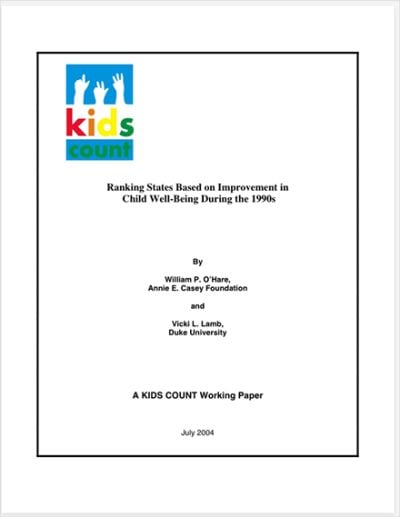Summary
Each year since 1990, the Annie E Casey Foundation has released a KIDS COUNT® Data Book assessing child well-being in each state based on 10 key statistical indicators. This publication uses the KIDS COUNT data from 1990 to 2000 to assess improvements in child well-being in each state during the 1990s. States are then ranked on the basis of improvements during the decade.
A New Index to Track Change
To gauge state-level improvements in child well-being, researchers created a composite index based on 10 KIDS COUNT indicators. The movement of this index over time indicates if child well-being is improving or deteriorating in a particular state.
What the Results Reveal
Between 1990 and 2000, the KIDS COUNT Index revealed a 14% improvement in child well-being nationwide. Yet, this statistic masks variation across states and over time. Most states (46 out of 50) showed improvement in child well-being during the 1990s. California exhibited the biggest improvement during the 1990s (up 23%), followed closely by Maryland and New Jersey (up 21% each). Two states (Nebraska and Wisconsin) experienced slight declines in overall well-being during the 1990s, and two other states (Kansas, North Dakota) showed no change over the decade.
About the Series
This publication is part of the KIDS COUNT Working Paper series, which elevates discussions about data gaps, results and trends related to the KIDS COUNT database.







